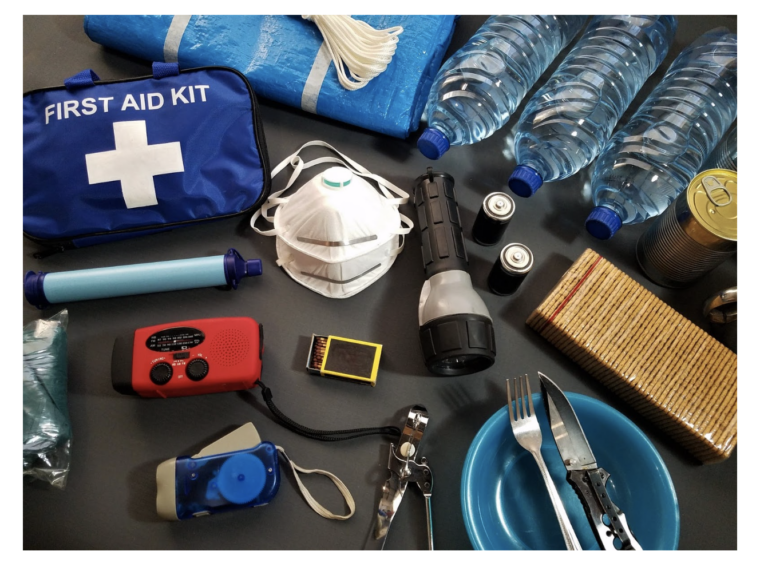What is Emergency Preparedness and How to Get Started
Unfortunately, being prepared for an emergency is something many people don’t think about until they need it. The lack of a foolproof fallback plan can leave any victim unable to recover from a significant unforeseeable disaster or financial shock fully.
Whether you are single, have a family, or run your own business, it’s important to consider worst-case scenarios. Your objective should be to return to your pre-emergency living standard or operational fluidity as quickly as possible. With adequate emergency preparedness, you can alleviate financial, emotional, and logistical strain when dealing with a crisis.
What is Emergency Preparedness?
This term encompasses the elaborate plan you create and follow to guarantee your well-being before, during, and after a natural or man-made disaster. When unprepared, it’s difficult to get through unfortunate emergencies, such as:
- Weather events, like flooding, destroy your family home or office workspace
- Fire burn down your business premises or home
- Injuries from a car accident or serious medical illness
- A pandemic leading to job loss or business shutdown
Emergency preparedness generally covers the resources and roadmap to quickly recover from any crisis, such as medical, housing, or financial.
Who Needs Emergency Preparedness?
Everybody! Many organizations, such as the Federal Emergency Management Agency and the International Committee of the Red Cross, have plans in place for a range of different emergencies and natural disasters. Such events could impact anybody, including individuals and business organizations.
Having a contingency plan for your company can help continue operations and cover financial losses. It entails establishing procedures and strategies to protect mission-critical business elements and processes, employees, and even customers where applicable. Emergency supplies are crucial, too.
You should also consider more minor emergencies that could happen to you personally. To keep your family safe in the middle of a disaster, such as a devastating storm, create appropriate shelter-in-place protocols.
A homeowner’s or renter’s insurance policy can help replace lost or damaged personal belongings or properties in a covered peril. Be sure to have adequate emergency supplies for use as you await evacuation.
Supplies for Emergencies
Some online sites and organizations offer planning templates and supply kits. When you can’t leave your home, or your location is unreachable due to the disaster, you can tap into your emergency reserves until help arrives. These items can also help when you and your family suddenly have to leave your damaged home for safety.
Think about your house, car, and workspace; is there anything you should have on hand just in case of emergency? Warm clothing, blankets, extra cash, a flashlight, and a cellphone with its charger are must-haves in most scenarios.
You’ll never regret being thorough, and make sure to check expiration dates for food, medical supplies, and fire extinguishers.
Financial Preparedness
Finances are a crucial component of emergency preparedness. Even after coming out of a fire, storm, or flood physically unscathed, you might need a lot of money to replace/fix any lost assets and return to your pre-disaster financial status. Most medical emergencies are equally financially draining.
Do your best to get insurance coverage for all types of emergencies: life, home, car, health, etc.
This may seem costly, but you’ll be glad you have it in the event something unfortunate happens.
Review your policies thoroughly to ensure they cover all types of emergencies relevant to you. If you live in a flood zone, check that you have a flood insurance endorsement as your standard homeowner’s policy may not cover this peril.
Saving for worst-case scenarios is highly advisable. However, if you’re unable to save enough, click here to learn more about emergency loans and how they can help with disaster recovery.
Make a Plan
Be sure everyone in your family and close friends knows what to do in case of some type of emergency. Things like a fire escape location or where you’d shelter in place during a tornado or earthquake should be clear to all. Have your plan printed and kept in an easy-to-reach place in case of emergency.
To ensure your plan is foolproof and reliable, be thorough, detailed, and practical, including necessary contact numbers. Practicing your emergency escape and survival blueprint one or more times per year will help make it second nature.
Emergency Preparedness
Business or personal emergencies come in all sizes and shapes. It could be a sudden job loss, a weather event that destroys your home or office, or sickness/injury that takes away your ability to work and earn a living. With a proper contingency and recovery plan in place, you’re better placed to face and get through the most difficult moments.

